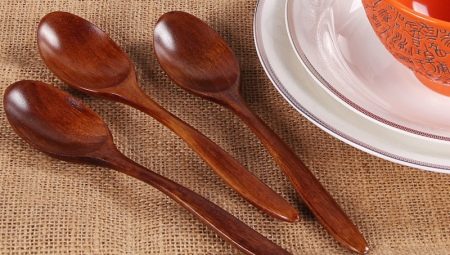A spoon is one of the most ancient cutlery, without which in our days they can not do in any house. The origin of a wooden spoon goes back to the Paleolithic era - around this time people first began to use pieces of wooden debris to scoop up food. For many years, such spoons were undeservedly forgotten, but recently eco-dishes have become fashionable again.
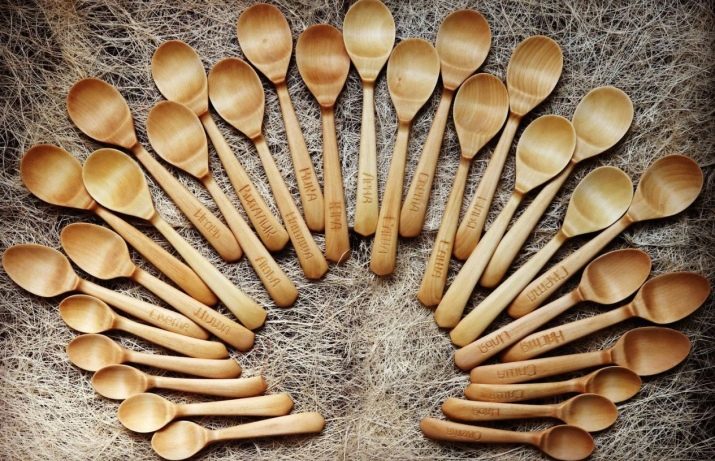
Description and history
Wooden cutlery was widespread for several centuries, but even today, despite the abundance of metal and disposable plastic dishes, they have not lost their relevance. Wooden ladles are very convenient for filling first courses, and scoops of this material are indispensable when stirring hot food in a non-stick pan.
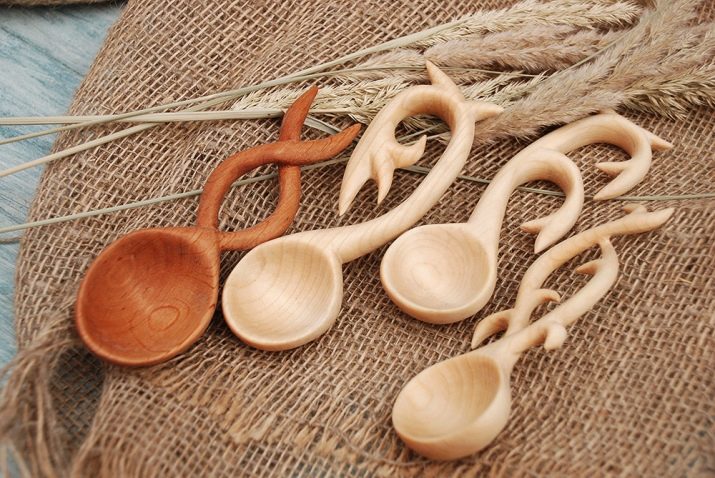

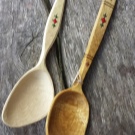

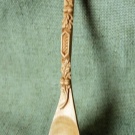

For Russians, wooden cutlery is much more than ordinary kitchen utensils, it is a kind of embodiment of national identity, the country's original culture and its traditions. These items came to us from the very depths of centuries, literally captivating everyone with their national color.
Interesting fact: the very first mention of wooden spoons is found in the famous "Tale of Bygone Years" dated 966. The pages of this work describe a feast in the palace of Prince Vladimir, who became known for the fact that the warriors were extremely indignant when at the table they were offered to taste the cooked dishes not with silver, but with wooden spoons.Since then, such utensils have long been in use in Russia, and even in those years when the rapid development of the metallurgical industry led to the widespread displacement of wooden things from everyday life.
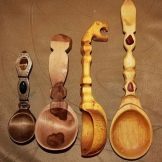


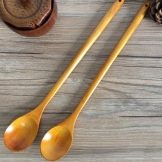
Among the main advantages of wooden spoons are the following.
- Antibacterial properties - with proper processing, the material does not accumulate pathogenic microorganisms.
- Specific flavor which has the property of being transmitted to food products and giving them a more intense and vibrant flavor.
- Environmental Safety - It is well known that wood does not contain harmful and toxic substances, therefore it does not harm the body. Moreover, it has the property of beneficially affecting the digestion process. Such features make it possible to use wooden cutlery to feed even the smallest children.
- Reduced thermal conductivity - you can safely even pick up the hottest soup with a spoon and don’t burn your lips, as happens when using metal appliances.
- Strength - products cut from wood do not deform, and with proper care they do not crack, crack or scratch, even if they are subjected to frequent mechanical stress.
- Ease - the cutlery is lightweight, so even weak people can easily hold it in the palms.
- Pleasant non-slip surface - such spoons do not slip out of hands, are not cold, they are quite pleasant to the touch.
- Possibility of use for non-stick cookware - during cooking in a teflon-coated pan, the wooden spoons do not heat up and do not scratch the surface.

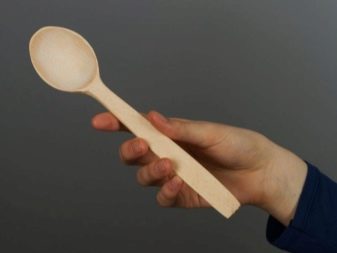
However, wooden spoons also have their drawbacks.
- They require special storage conditions and careful care., otherwise the products will not be able to maintain a decorative appearance for a long time. One of these requirements is humidity - it should be about 40-60%.
- Wooden cutlery it can only be washed by hand, the dishwasher is not suitable here, the use of abrasive products and aggressive compounds is not allowed. After each rinse, dry the spoons with a soft cloth.
- If the spoons are in water for a long time, then they are covered with mold, which is impossible to get rid of - such cutlery should be thrown away, their use dangerous to health.
- The tree has a porous structure, therefore, it has the ability to absorb odors - this means that spoons should not be stored near sharp-smelling products.
- Wooden spoons are more expensive than their metal counterparts.
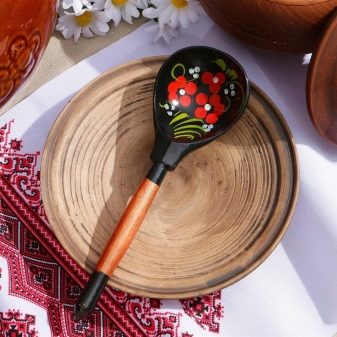
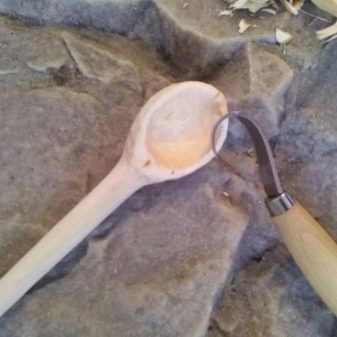
It is important that wooden spoons go well with glass and ceramic dishes, the main thing at the same time is to adhere to a single style in the design. So, for example, plates painted using the Gzhel or Khokhloma technique look very impressive with wooden spoons.
These cutlery create a unique atmosphere around you, fill the dining room with national Russian flavor and bring comfort - it is no coincidence that for centuries the tree has been associated with the warmth of the hearth, hospitality and family values.

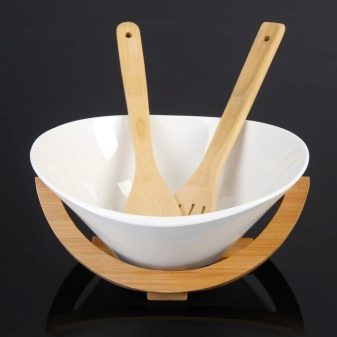
It should be noted that wooden spoons are widely used as a good musical instrument - All lovers of folk music know that when they come into contact with each other, two spoons make a very clear, clean and extremely melodious sound. In many countries of the world, schools for playing on wooden spoons have even been created.
The history of these amazing adaptations in our country originates in several small villages spread out on the banks of the small rivers Uzola and Kerzhenets. In those parts of the world they were infertile, and local residents could not grow a good harvest, which is why woodworking became an important source of income.

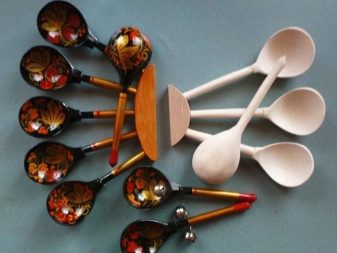
The small town of Semenov was recognized as the “Lozhkarnoy capital”, which in the Nizhny Novgorod region - it is he who is considered the center of the Khokhloma painting known around the world. In these parts, over the course of several centuries, the secret of the craft of distant ancestors, which created the best and most beautiful spoons, has been maintained, enhanced in every possible way and reverently transmitted from one generation to another.
How are they made?
If you wish, you can make a handmade wooden spoon at home. To do this, you need the following tools and materials:
- ax;
- hand saw;
- file for woodwork;
- rounded chisel;
- rasp;
- sandpaper;
- pencil;
- wood.

For the manufacture of spoons, it is best to use maple, aspen, linden, as well as birch or alder - these materials are easily processed and are not torn during use.
Step-by-step instructions for making cutlery includes several steps.
- You must choose a strong piece of wood without rot and cracks, after which it should be chopped with an ax or sawed with a saw.
- On a flat surface it is necessary to draw a contour of the future device with a stylus.
- With the help of a saw carefully cleaned all excess areas, and the ax is given a rounded shape of the outer part of the workpiece.
- It is very important to cut a thin layer of wood to form the optimal angle between the bread and the handle, it is advisable to walk through the section of their connection with a file.
- The next step is grinding the handle. In order to get rid of the coarsest elements, use sandpaper with a large grain size. At the final stage, it is better to take "null" - this will make the product more pleasant to the touch.
- Next, you can begin to make holes in the scoop - for this, a small piece of wood is gently scraped with a chisel. It is very important to monitor the thickness of the spoon - it should not turn out too thin.
- When the required form is received, you can peel wood - for this, strips of sandpaper are fixed to a stick with a round tip and the surface is treated.
- After the spoon is ready, it must be soaked with warmed vegetable oil.



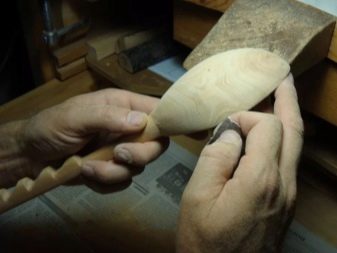
Today, eco-materials are back in fashion, therefore, natural wood products, including utensils, are again experiencing a surge in popularity. That is why the manufacture of wooden spoons has become serial.
These days, you can find on sale whole sets of wooden utensils carved on a lathe. For their manufacture, special equipment is used: cutters, chisels, brushes with steel bristles, as well as spoon knives and other tools. The technology itself is similar to home, but the finished product turns out to be better, practical and durable.
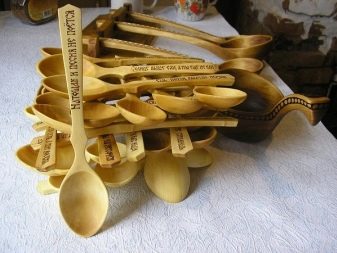

Varieties
The art of creating a wooden spoon in Russia has always been well developed. Craftsmen made the most diverse products, which differed in purpose, shape, depth and decoration. The total number of species is large and it is not possible to name their exact number.
The most popular samples are presented in the Semenov Museum, among them the following types are distinguished.
- Holy Communion Spoon - In the old days it was called a “liar”, at the end of the handle the Old Believers usually carved two-fingers.
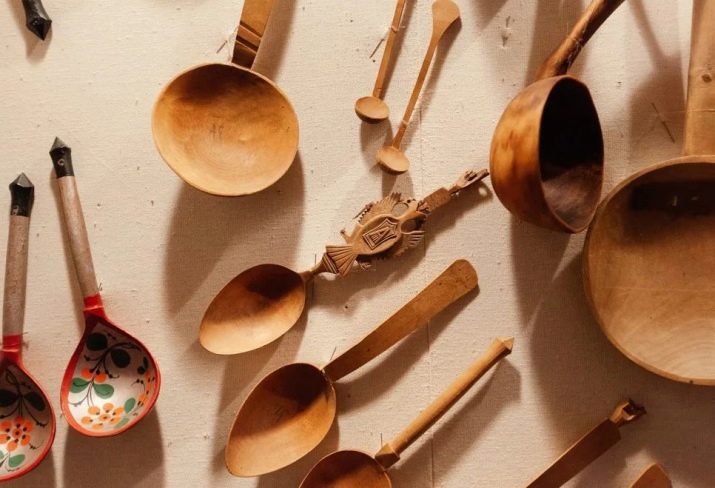
- Mezheumok - this is the most ordinary medium-sized spoon that was used during lunch, they poured soup with it and ate porridge. By the way, the name of the spoon means "something in between, neither this nor that, not belonging to any species, nor to any other." In ancient times, this concept meant not only cutlery, but, in principle, everything is “average”.
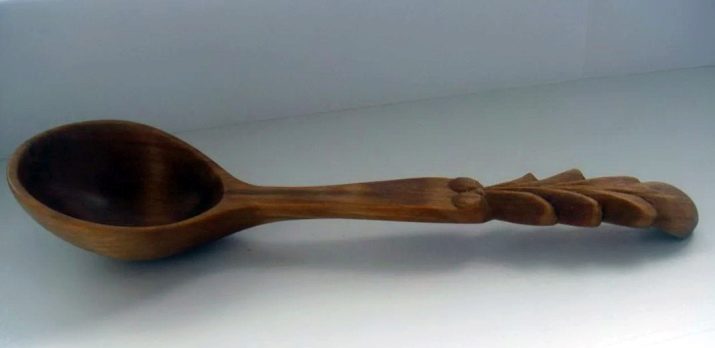
- Butyrka - a long boletus spoon, its name comes from the old Russian “butyryt” - turn, stir. A spoon of this kind was as wide as the mezheumok, but a little rougher and thicker.The barge haulers kept this spoon behind the ribbon of the headdress; it was their peculiar sign of distinction, a "signboard".

- Bosky (or Basques) spoon - This cutlery had an oblong and blunt shape, a similar structure had a semi-basky, slightly more rounded utensil. Translated, the name means "beautiful, decorated."

- Nosy - so spoons with sharp noses were designated in Russia. There is an opinion that it is about her that the proverb is composed: “The spoon is narrow, but carries three pieces each, it would be necessary to dissolve it faster so that it could carry six”.
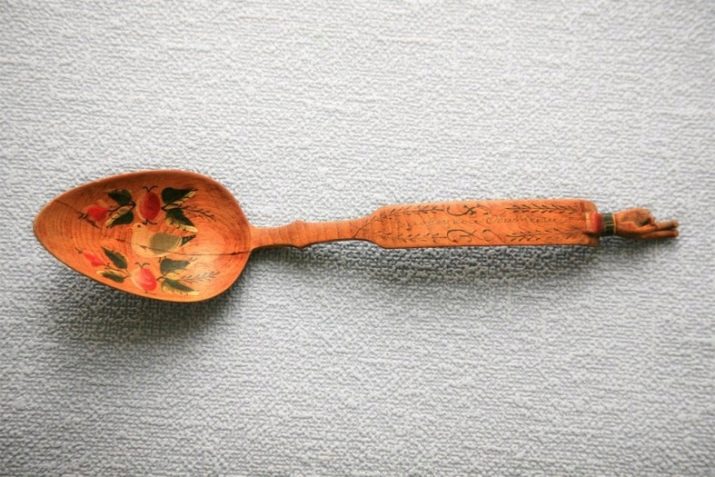
- Folding spoons - These are the most expensive devices of all that were produced in the Nizhny Novgorod province.

Depending on the characteristics of use, tea wooden spoons, mustard, plum, spoons for koumiss and salads, caviar, as well as halves and scoops are widely used. Depending on the design, the spoons can be carved, painted with drawings made in red, blue, gold and other shades.
Subtleties of use
The use of tablespoons of wood is allowed for a wide variety of processes.
- Stirring soups and main courses, as well as gravy, sauces and cereals. Unlike the now popular metal products, these spoons do not heat up, so the risk of getting a burn is minimized.
- When cooking some dishes recipes often require the addition of vinegar - it is best to use wood for this, because when the vinegar essence interacts with the metal, products often get a characteristic unpleasant aftertaste, which significantly worsens the finished dish. In some cases, there is also a darkening of the surface of the spoon.
- For kneading yeast dough and some other liquid mixtures, for example, compositions for making pancakes, muffins, pies and casseroles.
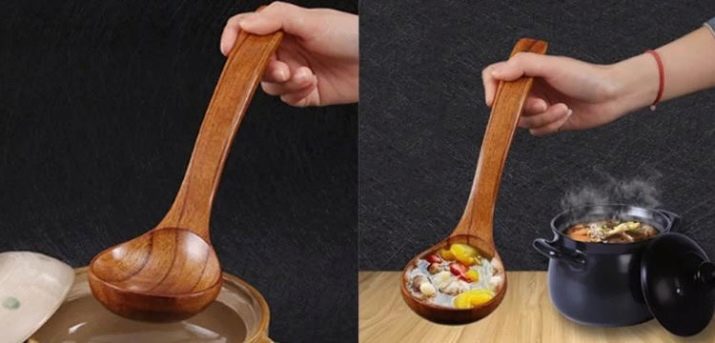
Storage and care
In order for the wooden spoons to serve their masters as long as possible, Some operating rules must be followed.
- Immediately after purchase the surface of the cutlery should be treated with a small amount of vegetable oil - with frequent use, this measure will prevent the occurrence of cracks. You can use any oil - sunflower, linseed, pumpkin or corn, it is advisable to preheat it, dab a napkin and rub it well into a spoon. You can use the device a few hours after processing, as the oil must be completely absorbed. It is advisable to repeat the procedure every 10-14 days.
- Wooden spoons need to be washed immediately after their use, since pieces of dried food from the surface of the wood are quite difficult to remove. Clean the spoons with warm water, a weakly concentrated cleaning solution and a regular sponge.
- Wooden dishes should be stored separately, for example, in a glass container or jar, try to avoid contact of wood and metal objects.
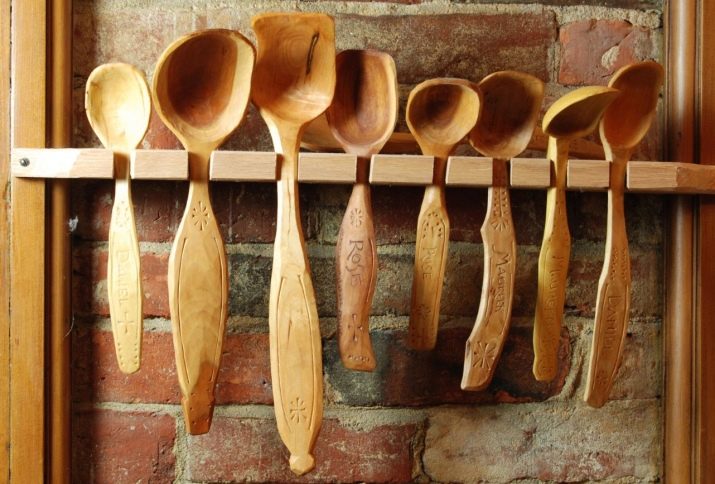
Provided that you follow all the requirements for the storage and operation of wooden spoons, they can serve you up to 10 years without changing their original appearance. But as soon as cracks appear on the device, knots begin to fall out, and the fibers begin to disintegrate - it is better to purchase a new product, otherwise you risk injuring yourself while eating.
See how to make wooden spoons with your own hands in the next video.
